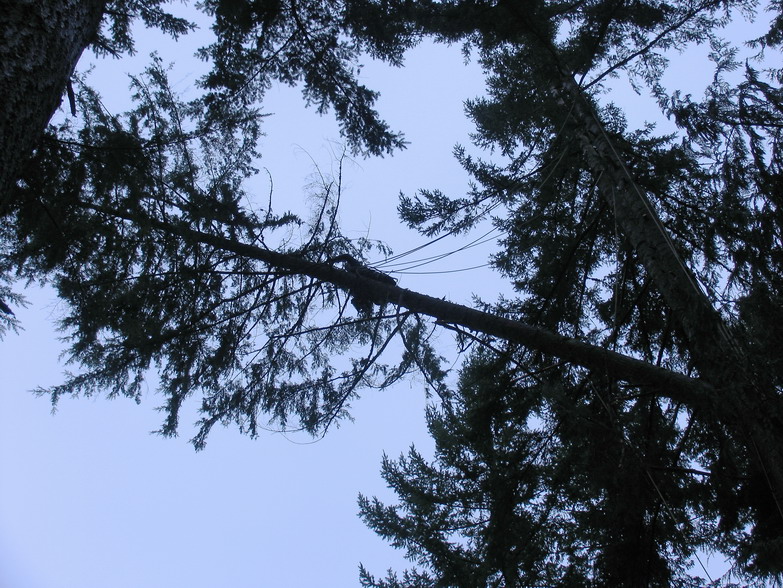TheKid
ArboristSite Operative
I agree almost 100% with what clearance just said. 'cept for the logging part, never done any logging.

I worked with a guy who would cut through as far as he could untill the bar started to pinch, then he would grab the top of the piece and rock it back towards himself (while one handing the saw) and power the saw through. It worked for him on smaller manageable pieces. I would never do it myself but he made it work. This guy also never wore a hard hat or any ppe, spiked trims, used his climbing line to pull butts over, you get the picture.
I am much more comfortable making a front cut first, be it a full notch or a simple snap cut.


First year, first large take down, brand new spikes in the truck (tried them but couldn't use them),
Brushed out a monster white pine, topped it, chunked down the wood. Crashed everything - no rigging/lowering.
1/2 way down I figured I'd save time by eliminating the scarf.
Cutting straight through some pretty big wood, the bark tore down a few inches until it hit my "lanyard". The weight/momentum smacked me into the remaining trunk and then the bark ripped through and broke off.
yikes











140 foot hemlock, C'mon 140 feet,


"I cut right through, saw comes out the other side, I let the saw hang, then I push of the block. The cut is level, the big block will not move on its own, it can take a real good push to move it." Dang you telling me the block stayed in place after you cut all the way through??? I hope the chain never catch the block it will and can spin it out of controll.....I have done the cut through thing only one time and thats just what happened to me..Good luck with that i keep the face cut....
Still; i like making faces most of the time; and in wood too!


Here is a true account of how not face cutting a heavy (not long) peice nearly got a guy killed.
A climber in a company I worked for was removing a tripple stemmed Spruce,he had stripped all three stems and blocked down the two outside stems.When he had removed his rope from the middle (remaining stem) he blocked this down to the main stem where three stems were joined,this was about forty feet up.Now standing with the flip line around the bottom of this large and heavy junction he cut through the stem untill it pinched his saw,now it started to go badly wrong.In his struggle trying to tip this block off the stem I think he finally started to rotate the peice as he couldn't tip it off,when it did fall his flip line was so close to the top of the stem after he had stood up to try and gain more leverage he followed the peice to the ground,his head missing a stump by less than a foot.He lived but won't climb again.He could have left the peice longer,put a rope on it,face cut it and had his groundies simply tip the chunk off.That would have been my tech in the same circumstances.I hope this helps